IMPORTANT TERMS
Cobweb theory: The idea that price fluctuations can lead to fluctuations in supply which causes a cycle of rising and falling prices.
Inflation: A general increase in prices and fall in the purchasing value of money.
Headline inflation: Headline Inflation refers to the overall change in price level and is susceptible to supply shocks.
Core inflation : Core inflation gives the underlying trend of inflation by exempting goods and services whose prices are highly volatile.
INTRODUCTION
Inflation has been witnessing moderation since 2014 backed by low food inflation. During the current financial year, however, food and beverage inflation have been trending differently. Food inflation has been on an upward trend mainly backed by the rising vegetables, fruits, and pulses prices. However, the volatility in prices of most of the essential agricultural commodities with some exceptions like pulses has been on a downward trend.
Since July 2018, CPI-Urban inflation has been consistently higher than CPI-Rural inflation, which is in contrast to an earlier trend where rural inflation was higher than urban inflation. Inflation has been declining in most of the states; however, the variability of inflation has been increasing.
CURRENT TRENDS IN INFLATION:
Inflation witnessing moderation since 2014. Consumer Price Index (CPI) inflation increased from 3.7% in 2018-19 (April to December 2018) to 4.1% in 2019-20 (April to December 2019).WPI inflation fell from 4.7% in 2018-19 (April to December 2018) to 1.5%during 2019-20 (April to December 2019)
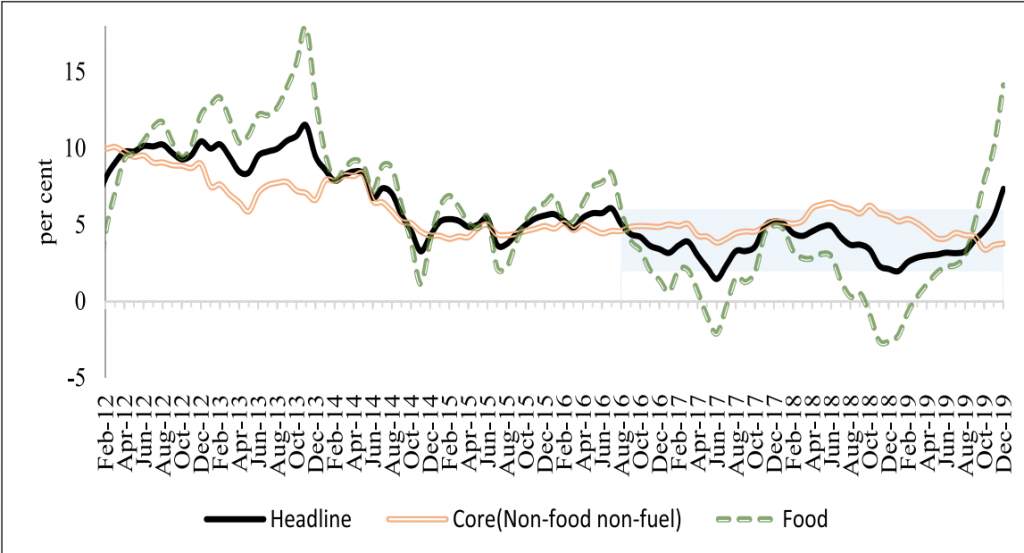
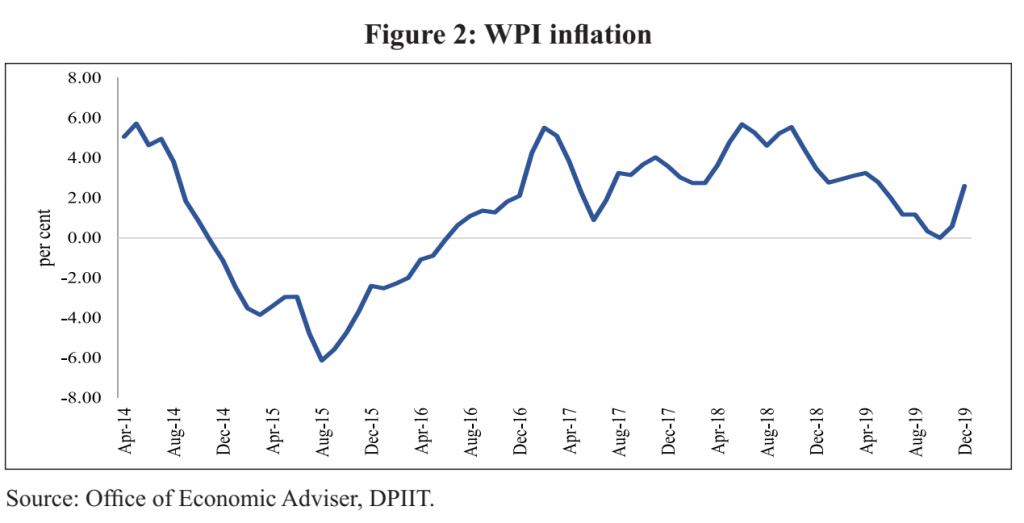
DRIVERS OF CPI:
Combined (C) inflation has been the main driver of inflation:
- During 2018-19, the major driver was the miscellaneous group. During 2019-20 (April-December), food and beverages were the main contributors.
- Among food and beverages, inflation in vegetables and pulses was particularly high due to low base effect and production side disruptions like untimely rain.
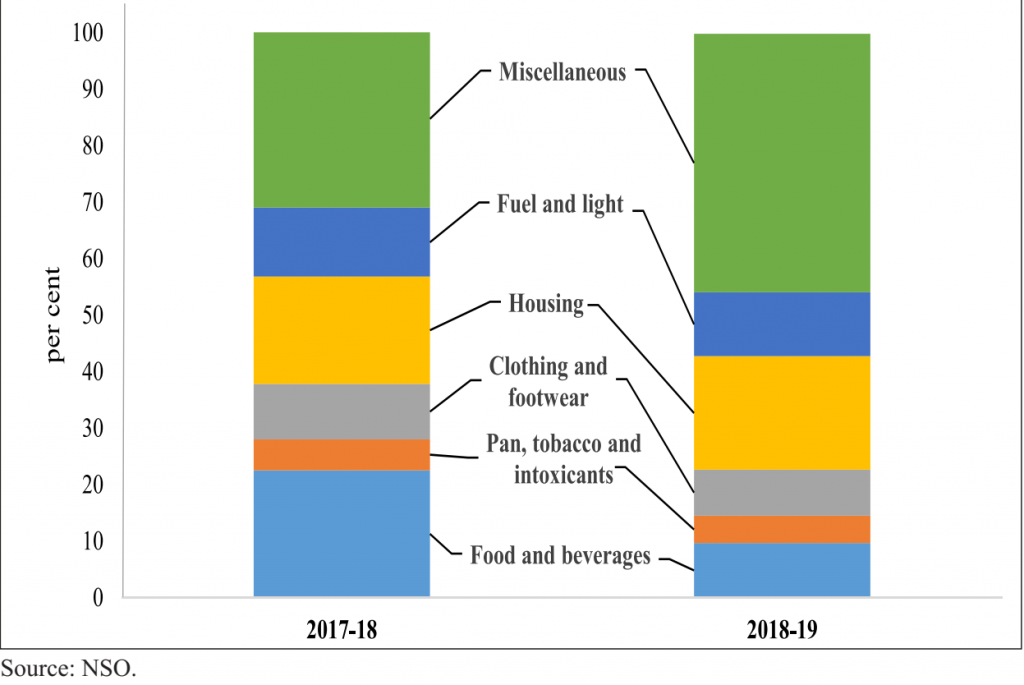
COB-WEB PHENOMENON FOR PULSES:
Cobweb theory is the idea that price fluctuations can lead to fluctuations in supply, which causes a cycle of rising and falling prices.
- Farmers base their sowing decisions on prices witnessed in the previous marketing period.
- Measures to safeguard farmers like procurement under Price Stabilisation Fund (PSF), Minimum Support Price (MSP) need to be made more effective.
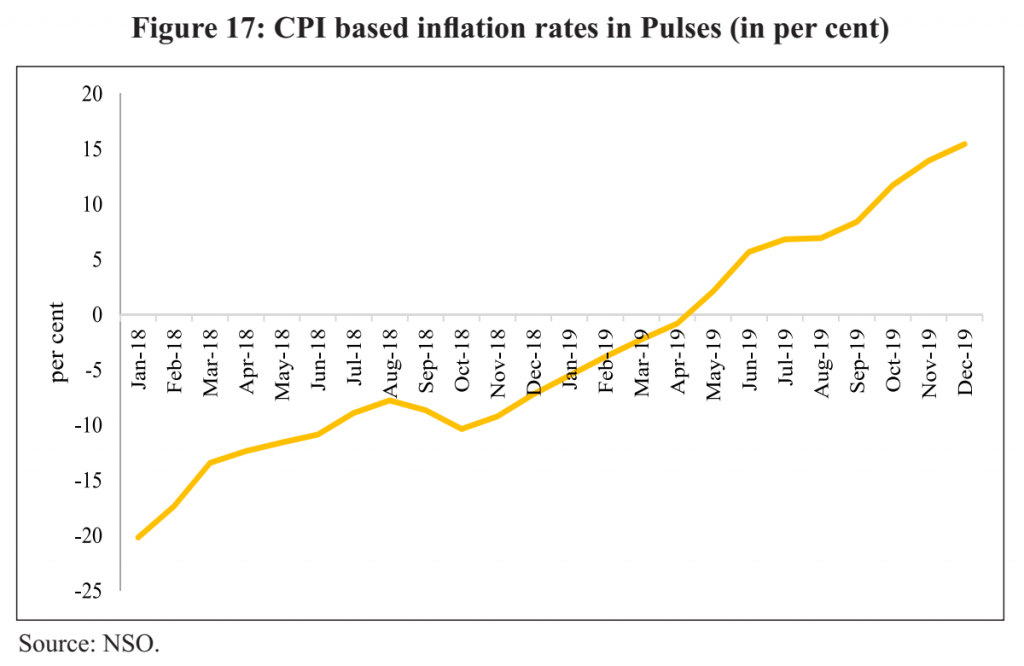
The divergence between retail and wholesale prices:
- Observed for essential agricultural commodities in four metropolitan cities of the country from 2014 to 2019.
- Divergence particularly high for vegetables like onion and tomato. This may be due to the presence of intermediaries and high transaction costs.
The volatility of prices:

- The coefficient of variation is a statistical measure of the dispersion of data points in a data series around the mean.
- Prices of rice and wheat remained stable since 2014 due to adequate supply arising out of sufficient domestic production and also due to the maintenance of adequate buffer stock of rice and wheat for meeting the food security requirements. As a result, the price volatility was lower in the case of rice and wheat.
- It may be seen that overall price volatility was highest for vegetables and lowest for rice, wheat, and palm oil. There was a significant rise in volatility for pulses, sugar and tomatoes during 2014 – 2019.
- The volatility of prices for most of the essential food commodities with the exception of some of the pulses has actually come down in the period 2014-19 as compared to the period 2009-14.
- Lower volatility might indicate the presence of better marketing channels, storage facilities and an effective MSP system.
REGIONAL VARIATIONS:
CPI-C inflation has been highly variable across states ranging between (-)0.04% to 8.1% across States/UTs in the financial year (FY) 2019-20 (April-December)
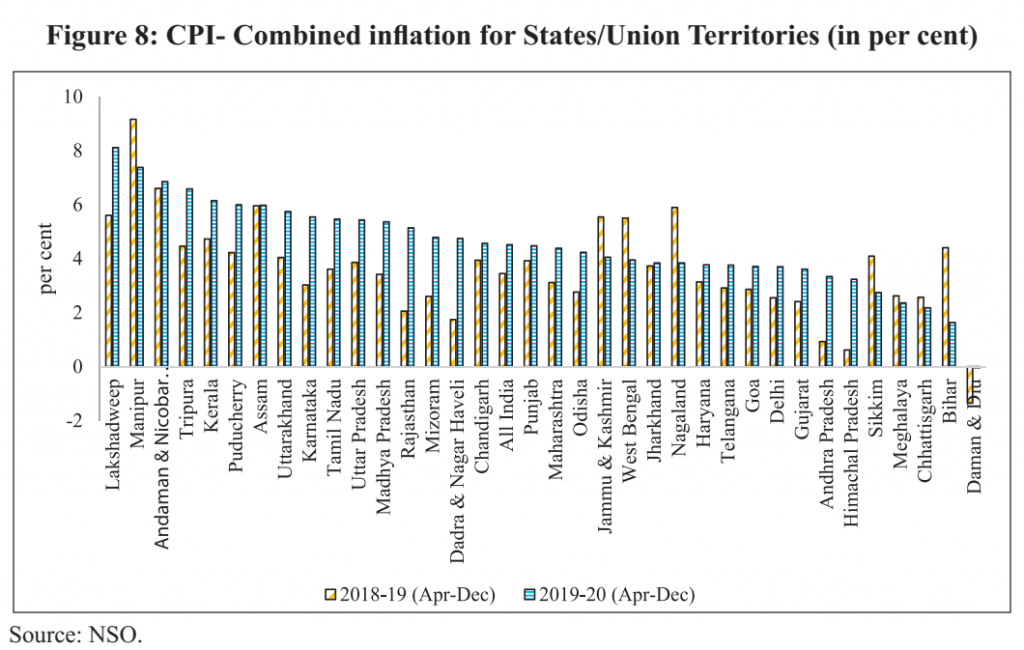
- In most states, CPI-C inflation in rural areas is lower than the CPI-C inflation in urban areas

- Rural inflation has been more variable across states than urban inflation.
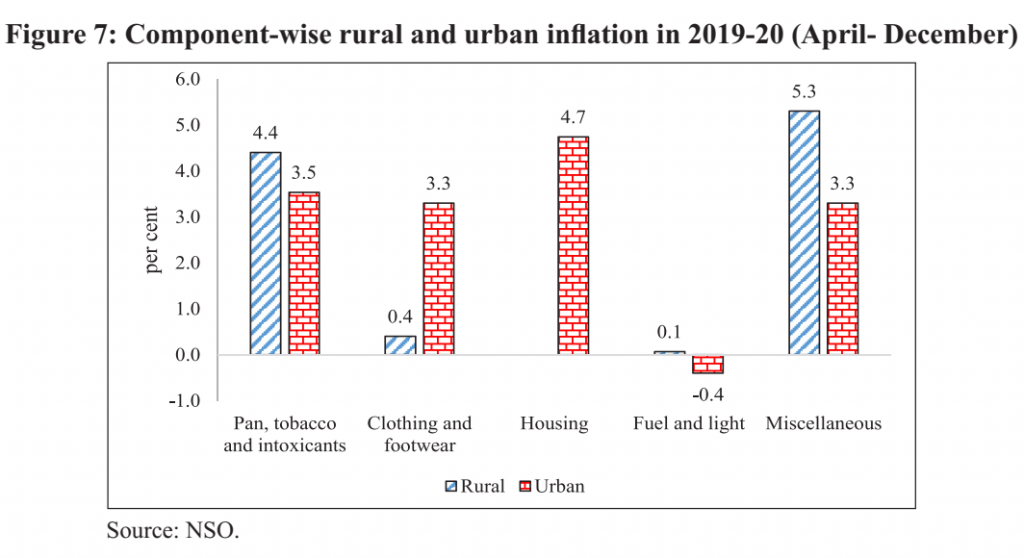
Inflation dynamics:
- Convergence of headline inflation towards core inflation as per the CPI-C data from 2012 onwards.
Efforts to contain Inflation:
- Central Government monitors the price situation on a regular basis as controlling inflation remains a key area of policy focus.
- The government has taken a number of measures to control inflation especially food inflation, which includes both general and specific measures.
| General Measures | Specific Measures |
| Advisories are being issued, as and when required, to State Governments to take strict action against hoarding & black marketing, especially for commodities in short supply. | During lean periods of 2017-18 and 2018- 19, to control the rise in onion prices, onions were released at reasonable prices from the stock procured under PSF. |
| These measures are taken to effectively enforce the Essential Commodities Act, 1955 & the Prevention of Black-marketing and Maintenance of Supplies of Essential Commodities Act, 1980. | The order empowering States/ UTs to impose controls including Stock Limits on Edible Oils and Edible Oil seeds has been withdrawn in June 2018. |
| Regular review meetings on prices and availability of key commodities are held at The highest level, including at the level of Ministers, Committee of Secretaries, Inter Ministerial Committee, Price Stabilization Fund Management Committee (PSFMC), and other Departmental level review meetings to take stock of the prevailing price and availability situation and recommend appropriate policy intervention. | Pulses from the buffer are utilized for strategic market intervention for price management, meeting institutional requirements like supplies to State Governments/UTs for Mid-Day Meal Scheme (MDM), Integrated Child Development Services (ICDS) Scheme, and Public Distribution System (PDS), and through Open Market Sale, etc. In addition, pulses from the buffer are being utilized to meet the requirement of Army and Central Para-Military Forces. |
| Higher Minimum Support Price (MSP) for pulses and other crops have been announced so as to incentivize production and there by enhance the availability of food items, which may help moderate prices. | Prohibition on export has been withdrawn in April 2018 on all varieties of edible oils, except mustard oil. The export of mustard oil in branded consumer packs of up to 5 kgs is permitted with a Minimum Export Price (MEP) of United States Dollar (USD) 900 per million ton (MT). |
| The government has set up Price Stabilization Fund (PSF) for procurement of Agri-horticultural commodities including potatoes, onions and pulses for its release during the lean period to improve availability and moderate their prices. | Import of food products from foreign countries in case of inflationary trends. |
CONCLUSION:
Overall, while the WPI inflation remained low during the financial year 2019-20, CPI-C inflation saw a slight uptick, driven mainly by food prices. Supply-side shocks in agricultural commodities such as onion due to erratic rains led to the sudden spike in the prices of these commodities.
Inflation expectations have declined thereby indicating that the inflation targeting framework has started influencing expectations of inflation in the economy.
Questions
There was a tremendous increase in the onion prices this year. Which of the following factors was/were responsible for this inflation?
1. Demand-supply mismatch
2. Damage to Kharif onion due to rain
Select the correct answer using the codes given below.
A. 1 only
B. 2 only
C. Both 1 and 2
D. Neither 1 nor 2
Ans. (C)
There can be many reasons for the rise in onion prices. One of the primary reasons that are observed every year is driven by demand-supply mismatch which can be primarily attributed to the seasonal factors.
Other reasons that further exacerbated this demand-supply mismatch are the fall in area sown and damage to Kharif onion due to rain. As reported from major Kharif growing States (Maharashtra, Karnataka, Madhya Pradesh, Andhra Pradesh, Gujarat and Rajasthan), area sown/transplanted is around 7 per cent less as compared to the previous year. Damage to Kharif onion crop also occurred due to heavy rains in September/October 2019.





